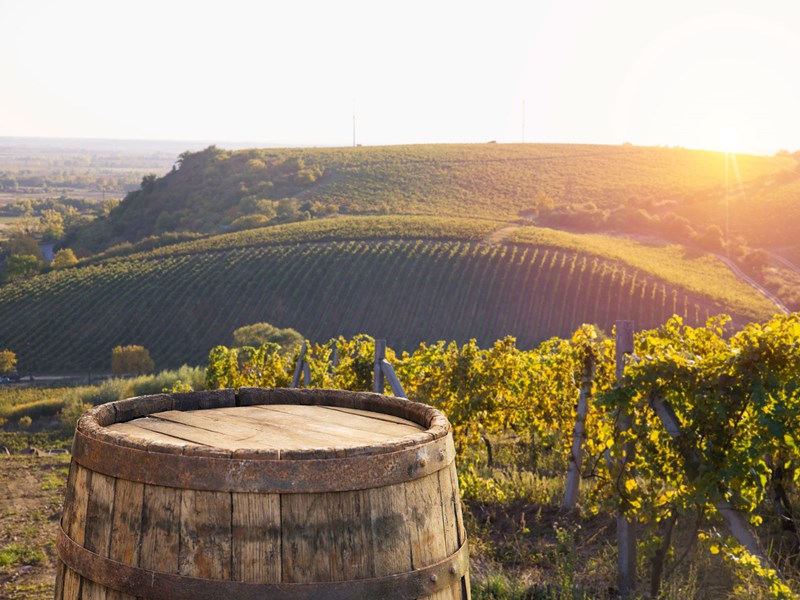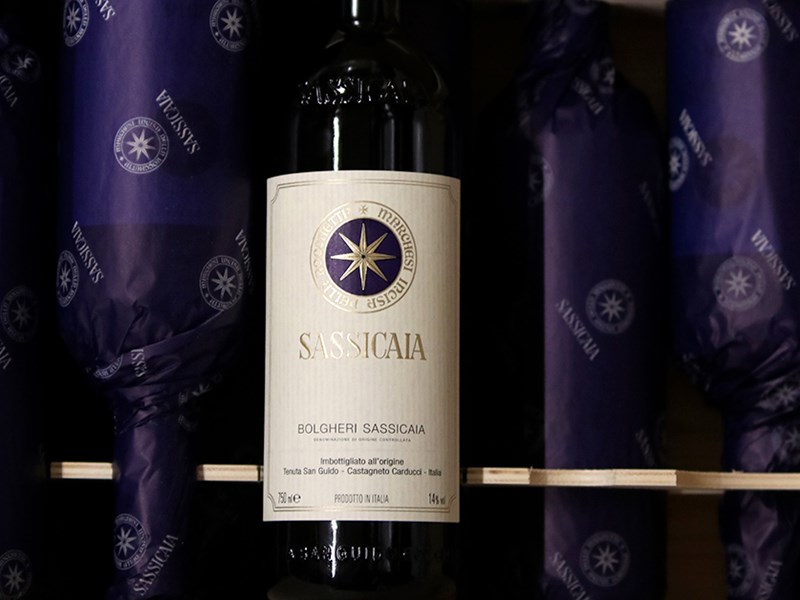Article - RareWine Academy
Bolgheri's Rise To Fame In The World Of Wine
Bolgheri is known for its great wines and some of the best Italian wine producers. Ornellaia, Sassicaia, and Masseto just to mention a few. Learn more about Bolgheri...
Something is going on in Italy these years, and it looks fascinating. Not only is Italian wine ranked in the top 10 of the Liv-ex Power 100 list for 2020 with no less than 4 producers, but the Italy-100 sub-index was the best-performing sub-index on the English Wine Exchange in 2019 and the second best of all in 2020.
Italy is divided into 20 regions, each of which have their sub-regions that produce different wines. Two regions, particularly, stand out when focusing on Italian wine for investment. Piemonte, where you find Barolo and Barbaresco, and then Tuscany with Brunello di Montalcino and Bolgheri as the leading wines. The last is particularly interesting. Bolgheri is home to producers such as Ornellaia, Sassicaia, and Masseto, among the top Italian producers and three standard-bearers for the Italian march forward in the wine market.
French-Inspired Italian Success
Italy is known for its more than 1,000 different local grape varieties with everything from Nebbiolo to Sangiovese, which can probably almost be called the "national grape" in Italy. Yet Bolgheri has drawn inspiration from Bordeaux. As a result, much of Bolgheri's success is based on classic French grape varieties such as Cabernet Sauvignon and Merlot.
 Amazing Bolgheri is one of the most succesful wine regions in Italy.
Amazing Bolgheri is one of the most succesful wine regions in Italy.
On The Edge Of The Mediterranean
”The elders said that great wines could not be made near the sea.
Today it has been shown that it is precisely the proximity of the sea that gives great wines.”
First, the geography. Bolgheri is located in the western part of Tuscany, 270 km. north of Rome and 100 km. southwest of Florence. Here you will find a very special terroir, where the vineyards almost reach the sea like an amphitheater and are protected by mountains with trees. The area where the grapes for the DOC Bolgheri are grown extends over 13 x 7 km and ranges from 10 to 380 meters in altitude. So here, you will find 1,370 hectares of vineyards.
The location near the sea provides daily breezes that bring cold to the grapes, contributing to the wines' freshness. The wind blows well over 250 days a year in the area, which means mold diseases, for example, have a hard time gaining a foothold in the vineyards. With 600 mm. of rain a year and a large amount of sun, we have optimal conditions for producing great wine. The soil offers a great variety, from sand to large rocks; everything is there. In total, 27 different soil types have been defined in Bolgheri. The different soil types, in combination with the differences in altitude, mean that it is possible to work with several grape varieties in a relatively limited area.
Sassicaia Paved The Way For Bolgheri
Marquis Mario Incisa della Rochetta was the man who had the vision to make Bolgheri one of Italy's leading wine regions. He married Countess Clarice Della Gherardesca in 1930, with whom he moved to Bolgheri. Clarice's sister Carlotta married Niccolò Antinori in the same year, dividing the region's largest domain between the two families. At that time, the wines in the area were uninteresting, simple, and only for everyday use the following year. However, the Marquis had greater ambitions as he had a taste for the great French wines. He obtained cuttings from a vineyard in Migliarino Pisano, an Italian clone of Cabernet. These were planted in Castiglioncello di Bolgheri, where they were protected from the influence of the sea. He took the first small steps towards the Sassicaia we know today, going against the region's traditions where the Sangiovese grape was already sworn in. The Marquis continued his experiments until the late 1960s. The first commercial Sassicaia was in 1968, launched in 1972.
In the local area, however, people were not enthusiastic about the extravagant wines based on the Cabernet grape, but luckily, they were also being marketed in the rest of Italy. In 1978, Sassicaia won a significant competition organized by the wine magazine Decanter against other wines made from grapes from Bordeaux. With the victory in this tasting, the local Tuscans also began to open their eyes to Sassicaia.
The 1985 vintage was the big breakthrough and was compared in a blind tasting with the 1986 Chateau Mouton-Rothschild by Mr. himself. Robert Parker, who awarded the Sassicaia 1985 the magic 100 points. Incidentally, it is the first Italian wine ever to receive a perfect score from an internationally recognized reviewer. Since then, there has been no looking back. Sassicaia has been the standard bearer for the rebellious band of producers who are bucking the tradition of using only Sangiovese and instead leaning towards Bordeaux-inspired grapes aged in French barriques. These wines later became known as Super Tuscans.
The Story Of Bolgheri And The Super-Tuscans
Wine has been grown in Bolgheri for hundreds of years with only one aim: washing down the meal daily. This indicates that the wines were rustic and of poor quality. The first rules (DOC) for quality and wine production in the area were approved in 1983 and included only white and rosé wines.
The first great red wines from Bolgheri could not be sold because they did not follow the current DOC quality pyramid and violated the rules not to blend Sangiovese with international grape varieties. This caused trouble and showed the rebellious thinking that prevailed in the area. Sassicaia and the other revolutionary red wines were still produced and marketed with the permitted designation "Vino da Tavola." Then came the more stringent "Indicazione geografica tipica (IGT)". These wines quickly gained many fans in the wine market, who called them "Super Tuscans."
Outside Bolgheri, people also opened their eyes to blending Sangiovese with other French grape varieties and aging the wines in French barriques. As a result, Super Tuscans are not only found in Bolgheri but throughout Tuscany, where Tiganello and Solaia, among others, can be counted among the pioneers who, to that extent, paved the way for the entire Super Tuscan movement.
The set of rules for quality in this area has been adapted several times over the years, and from 1994 onwards, the red wines were officially affiliated with the Bolgheri DOC, and Sassicaia was also given its own sub-DOC with an even stricter set of rules adapted to the totally unique wine.
In 2011, the rules were modified again, so it is now possible to produce wines from individual grapes within the DOC rules. Cabernet Sauvignon, Merlot, and Cabernet Franc are the three most prominent, followed by Sangiovese and Syrah. In addition, it is permitted to work with up to 30% of other grape varieties. All in all, an open and innovative set of rules that gives the winemaker an excellent framework to develop his creativity.
 Sassicaia is one of the most prestigious Italian wines and sought after world wide.
Sassicaia is one of the most prestigious Italian wines and sought after world wide.
Bolgheri Today
Today, 60 producers in Bolgheri make some of Italy's most sought-after wines. Sassicaia stands alone, with its own well-deserved DOC, but the other top producers leave nothing behind regarding quality.
Local winemakers have been fighting a conservative trend for many years. Strong outside forces, however, have significantly impacted making it appear today as perhaps the most attractive wine region in Italy. From 1978 onwards, strong forces entered the scene, including Piermario Meletti Cavallari, who founded Podere Grattamacco in 1977 and is now one of the leading producers.
Also striking is the Belvedere estate, which was split between the two Antinori brothers, Lodovico and Piero, who each built their top estate. Marchese Lodovico Antinori founded another super Tuscan, Ornellaia, in 1981, while Piero introduced Guado al Tasso. Among the locals, we should also mention Eugenio Campolmi, who founded Le Macchiole and remains at the top of the hierarchy today.
In the Liv-Ex '2020 Power Top-100, Bolgheri is very well represented. Sassicaia ranks number 4, Ornellaia number 6, and Masseto number 9. With three producers in the top 10, Bolgheri is better represented in the list than both Burgundy and Champagne.
